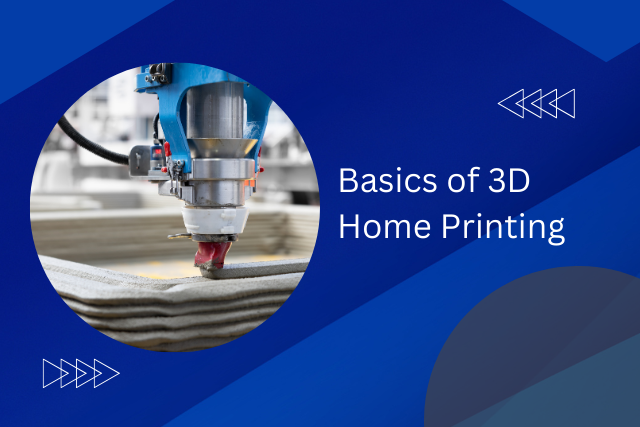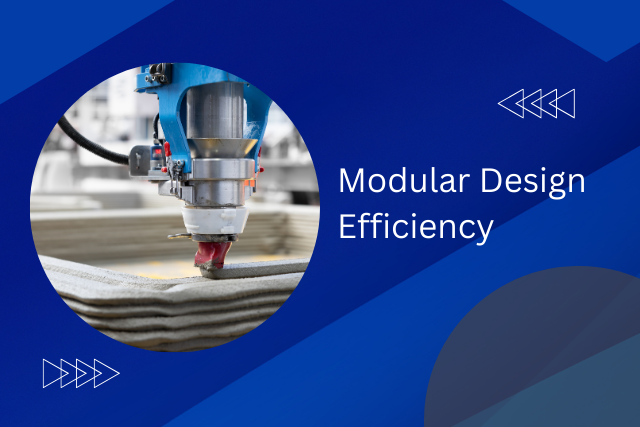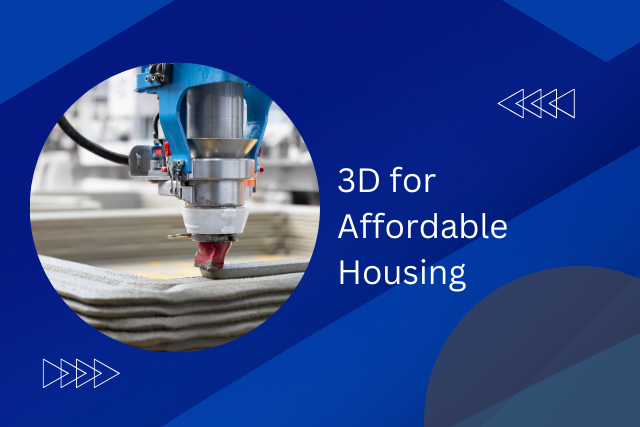We are entering a new time to improve houses for our planet, and 3D-printed tiny homes are at the heart of this change. They use the latest technology to help with two big problems we face today: harming the environment and high costs. These tiny houses are great because they make less trash and can use better materials for the Earth. They also save a lot of money and time. As we look into how these homes can change how we live, we need to consider what this means for selling houses, planning cities, and changing our lifestyles to fight against climate change. The future might change how we see what a home is.
Defining 3D Printed Homes
3D-printed homes use advanced technology to build houses layer by layer from environment-friendly materials. This new way of building is changing the construction world because it can make building houses faster and cheaper. It also lets people design their homes exactly how they want, from the shape of the walls to the small details inside.
These homes are unique because they can change and grow with people’s needs or wants. If someone doesn’t like the usual house market, this is a very interesting choice. Since these homes are modular, they can be made bigger or changed easily, unlike traditional houses that don’t change much.
Using digital blueprints makes building these homes faster and ensures they are well-made. This mix of technology and creative design makes it easier for more people to have homes. It also means a future where being free and caring for the environment are essential parts of what makes a house a home.
Environmental Benefits
3D-printed homes are a big step forward in living in a good way for the environment. These homes are not only about designing and living in spaces that show what we value and dream of but also how much we care about protecting our planet. Looking at these homes through the ideas of innovation and being good for the environment, 3D-printed homes stand out as a great example of living in a friendly way to the earth. They offer a way to reduce our environmental harm while still living in a way that values freedom and responsibility.
| Environmental Benefit | Impact |
|---|---|
| Reduced Waste | Using materials that are good for the earth and often recycled reduces environmental harm. |
| Sustainable Materials | Smaller size and designs that can reduce harm to animal homes. |
| Energy Efficiency | Homes designed to use less energy lower how much energy is used. |
| Lower Carbon Footprint | Moving fewer materials and building on-site cuts down on emissions. |
| Biodiversity Preservation | Smaller sizes and designs that can reduce harm to animal homes. |
Putting all these environmental benefits together shows that 3D-printed tiny homes are not just places to live, but they stand for a future where living freely and being responsible for the earth go hand in hand. This new way of making homes is a clear example of how innovative thinking can create good solutions for people and the planet.
Cost and Time Efficiency
3D-printed tiny homes are changing the building world by making things cheaper and faster. This new way of building uses computer designs and quick 3D printing. This means homes can be built much quicker than the old ways, cutting down the time needed to make a house. This faster process means lower costs for work, which is good news for buyers.
Also, 3D printing is good at using materials without wasting them, which helps save even more money. The 3D printers are very precise, so they use the right amount of material without extra. People who don’t want to waste resources will find this appealing. Plus, as more people use 3D printing, the costs might go down even more.
Putting together the fast building time and savings on materials and work, 3D-printed tiny homes are an excellent option for people wanting an affordable, mobile, and eco-friendly place to live. They show a future where living free and green is possible and practical.
Design and Customization
The world of design and customization in 3D-printed tiny homes offers excellent chances to make your own home. This new way lets people use their imagination without being held back by old rules. You can make every part of your home show who you are and what you need. People planning to get a home using special software can pick their home’s layout, materials, and unique parts that match what they believe in and wish for freedom and easy moving.
Technology in 3D printing has made it possible to do things in customizing homes that we couldn’t do before. These machines work carefully and quickly, turning detailed digital designs into actual buildings. They can create complicated designs and make the most of small spaces. This fits well with the simple but stylish life of tiny home living. Being able to customize like this shows off the owner’s unique style and supports living in a way that’s good for the planet. It reduces waste by using materials wisely and fits into different places without harming them.
In this new age of wanting to move quickly and live in a way that’s good for the earth, 3D-printed tiny homes are a great example of what people can do when they use their creativity to live differently. These homes offer a chance to live freely how you want, showing that your home is more than just a place to stay. It’s a reflection of your life and dreams.
Durability and Maintenance
When discussing the good points of design and making 3D-printed tiny homes custom, we also need to consider how strong they are and how much work it takes to keep them up. The newest materials and printing ways make these homes look fantastic and very tough against weather and other problems.
These houses are vital because they use unique mixed materials that are made to last a long time. These materials don’t rust, can handle bad weather, and keep bugs away, so you don’t have to fix things often. Also, because 3D printing is so exact, there are fewer mistakes in building, making the house stronger and last longer than old-style buildings.
Taking care of these tiny homes is more accessible, too. They use special concrete and materials that can fix minor damages by themselves. This means you don’t have to spend so much time and effort keeping the house in good shape, giving you more time to enjoy living in it.
Mobility and Flexibility
Exploring the world of 3D-printed tiny homes shows us a new way of living that is very flexible and allows for easy movement. These tiny houses are good for the environment and meet the needs of people who love to move around and change their living places often. 3D printing technology makes it possible to build these homes almost anywhere, from busy city centres to quiet natural areas, giving people a mix of convenience and a way to get away from it all.
The easy-to-move nature of 3D-printed tiny homes comes from their smart design. They use light materials and parts that can be easily assembled and taken apart. This means owners can move their homes without the big hassle of moving a traditional house. This ability to move quickly gives people more chances to try living in different places or ways of life without settling down in one spot.
Also, since 3D printing technology allows for customization, these homes can fit the owner’s wants and likes. This makes 3D-printed tiny homes even more attractive as places to live. Looking ahead, these homes show us a future where our homes can move and change with us, offering many freedoms and options for how we live.
Legal and Zoning Issues
Dealing with the rules and areas where you can build 3D-printed tiny homes is tough. Most of the time, the rules don’t fit these new types of houses, making it hard to know what you need to do to follow the law. But things are starting to change. Some places are seeing how these tiny, 3D-printed houses can help with the lack of affordable homes and are considering changing the rules.
To make these homes more accepted, different groups need to work together. This includes the people who build the homes, those who want to live in them, those who plan our cities, and those who make the laws. By talking about the good things about 3D-printed tiny homes, like being good for the environment, not costing too much, and being built quickly, they can convince others that it’s time to change the laws. Trying out these homes in certain areas can show everyone how well they work and how they can fit into both cities and the countryside.
Getting these homes to be a regular part of where we live depends on being creative with the technology and how we make rules. Making the rules more flexible will help bring in a new way of living that is moveable and doesn’t harm the environment. This could be an excellent option for people looking for different living methods.
Impact on Housing Market
The advent of 3D-printed tiny homes heralds a transformative period for the housing market, primarily enhancing market accessibility for a broader demographic. This innovation is poised to recalibrate price dynamics, potentially lowering entry barriers for homeownership and stimulating new real estate development models. Such a shift not only promises to make sustainable living more attainable but also introduces a new era of housing solutions that are both economically and environmentally viable.
Market Accessibility Improvement
The arrival of 3D-printed tiny homes marks a significant change, making it easier for people to access the housing market and changing how we think about where we live. This new technology allows people more freedom in choosing where they want to live without being tied down by the usual problems of finding a home. By using 3D printing technology and the idea of living in smaller spaces, we are moving towards a future where choosing a home is much easier. This change can help overcome problems related to where you live, how much money you have, and taking care of the environment.
These tiny homes made with 3D printing are custom-made, flexible, and can help solve many of the challenges we face today in finding a place to live. They represent a big step forward in making homes that are good for the planet, easy to get, and tailored to people’s needs.
Price Dynamics Shift
3D-printed tiny homes could change how much it costs to buy a house, making it cheaper and better for the environment. This new way of building homes cuts down on wasted materials and the need for lots of workers, which can lower the price of houses. Building a house could become less expensive as 3D printing improves and more people use it. This means more people might be able to own a home. This significant change is suitable for people who want to live independently and care about the planet. It shows a future where living in an affordable, eco-friendly home is possible.
Community and Lifestyle
The advent of 3D-printed tiny homes ushers in a transformative era for community and lifestyle, particularly in fostering enhanced social connectivity and promoting eco-conscious living. These innovative housing solutions streamline the creation of environmentally sustainable communities and catalyze the formation of tight-knit social networks, redefining the essence of neighbourhood dynamics. By prioritizing efficiency and sustainability, 3D-printed tiny homes are setting the stage for a future where living spaces are not just places of residence but catalysts for a more connected and environmentally responsible society.
Social Connectivity Enhancements
3D-printed tiny homes are changing how we connect. They strengthen communities and improve our lives by using new designs and technology. These small houses are smart in saving space but also help people come together. They have smart technology that lets people easily talk to their neighbours, share things, and plan events with just a click.
These homes are also easy to move, which means people can travel to new places but still feel like they are part of a community through online connections. This mix of being able to move around freely and still having friends shows a bright future where our homes help us be closer to each other, even though they are small.
Eco-Conscious Living Benefits
Choosing 3D-printed tiny homes helps us live in a way that is good for the environment and brings people together. This new way of making houses uses materials that don’t harm the planet as much, helping us live but still have what we need. We can use solar panels and systems to collect rainwater, making these homes less reliant on usual energy sources and more eco-friendly. 3D printing makes it easier to design houses that encourage sharing and living together, which is better for the planet. This move towards smaller, more innovative homes is a big step towards a future where we can live freely without harming our environment, making it possible for communities to grow in a way that’s good for the Earth.
Future Prospects and Challenges
3D printing in making affordable homes could change our thoughts about building tiny houses. This exciting technology makes it easier and cheaper to create homes that fit different people’s needs, are suitable for the environment, and don’t cost too much. 3D printing can work with many designs and materials, making building in new and different ways possible. This could help us get past some common problems in building houses.
However, there are some big challenges to solve. The rules about building houses, including what’s allowed where (zoning laws) and safety standards (building codes), haven’t kept up with this new way of building. Making sure that 3D-printed homes are substantial and will last a long time is very important, and we need to check this carefully. Also, starting to use 3D printing for building can be expensive, and you need people who know how to do it.
But, the idea of 3D-printed tiny homes is still very promising. If we can deal with these problems, we could make a future where living in affordable, easy-to-move, and eco-friendly homes is possible for more people.
Conclusion
Creating 3D-printed tiny homes significantly changes how we think about living spaces. These homes are better for the environment, cheaper to make, and can be designed in many ways. This new way of building homes can help more people afford their place. However, there are still some legal issues that need to be resolved. As technology improves and more people accept these homes, 3D-printed homes could change how we live in cities and the countryside. They represent a future where being able to move your home quickly and living in an eco-friendly way come together perfectly.






